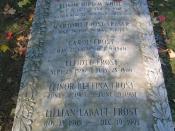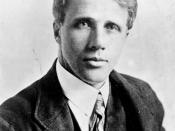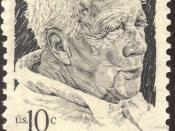How has the composer represented his ideas about identity and the world?
Mending Wall
In order to fully understand the meaning of life and our purpose as human beings, we must first get to know ourselves. This can only truly be achieved through our connections and interactions with nature and fellow humans, and by overcoming the countless obstacles and challenges that we meet along in our journey of life. Through Robert Frost's use of language techniques in the poem Mending Wall, the connection between identity, human nature and the world in which we live in are revealed to us. Written in America during the devastating World War I, Frost set out to teach us, the observer, about the importance of human interaction with each other and nature. This is evident through the fact that in our relationships with others in the world we are able to find out more about ourselves, and also that it is our genetic identity as humans to be social creatures and the isolation that some people desire can be seen as unhealthy.â¨
In our relationships with others in the world we are able to find out more about ourselves. Through Frost's interactions with his neighbour once a year, Frost was able to learn about his own beliefs and that of his neighbours. Through the symbolic image of the 'wall' in "there where it is we do not need the wall", we, the observer recognise Frosts' belief that the wall is an unnecessary barrier between the two farmers. The personal pronoun 'we' emphasises the importance of the interaction between the two men as being significant. The repetition of the phrase "Good fences make good neighbours" by Frost's neighbour, directed at Frost, is used at lines 27 & 45. We observe that Frost's neighbour has...


